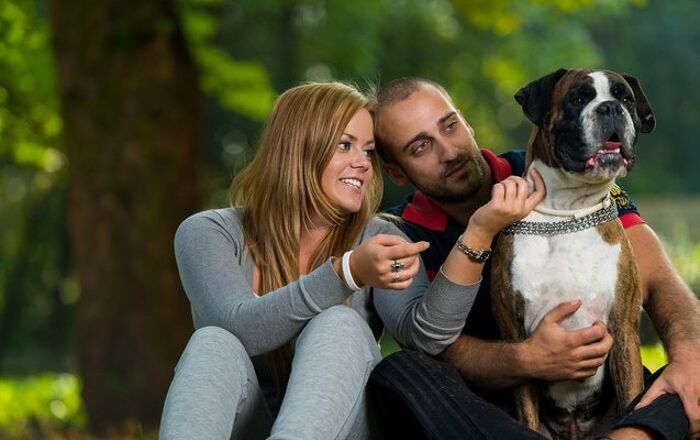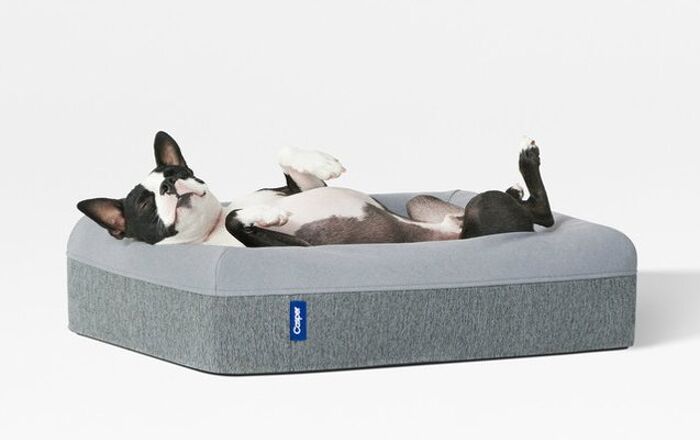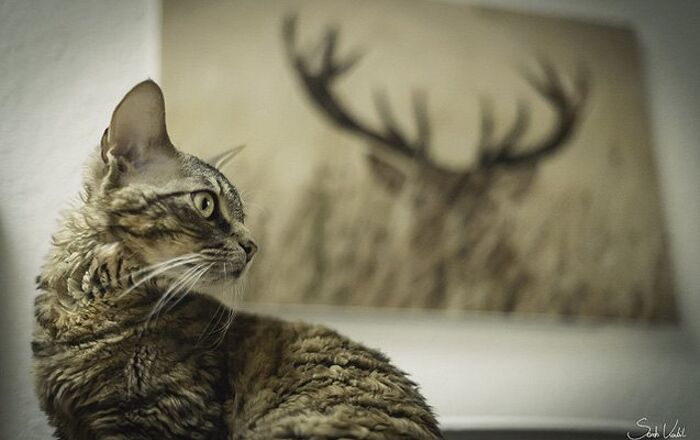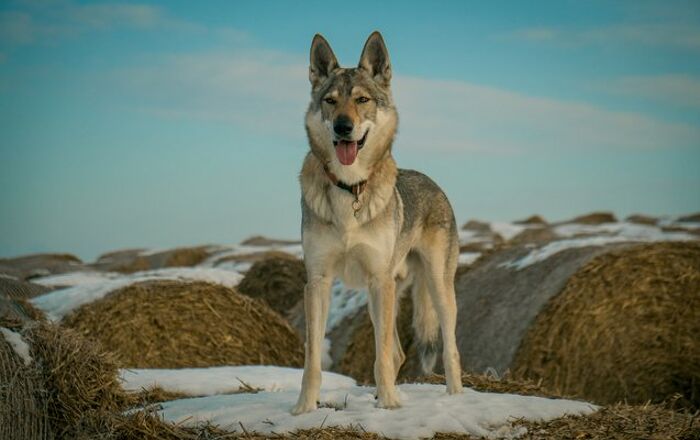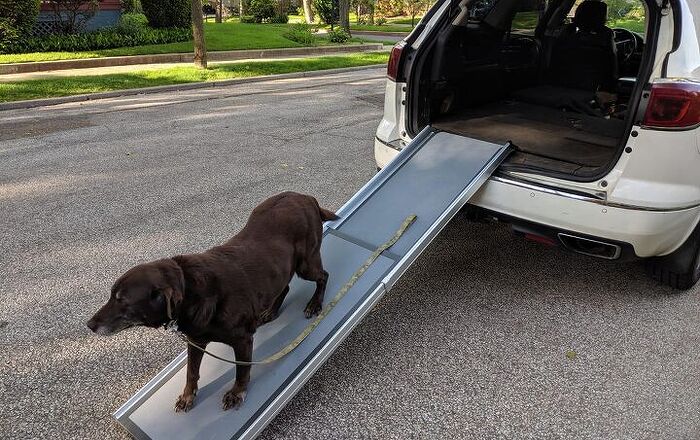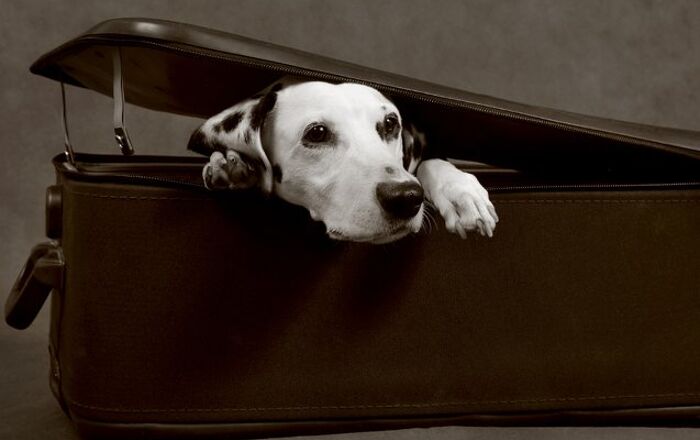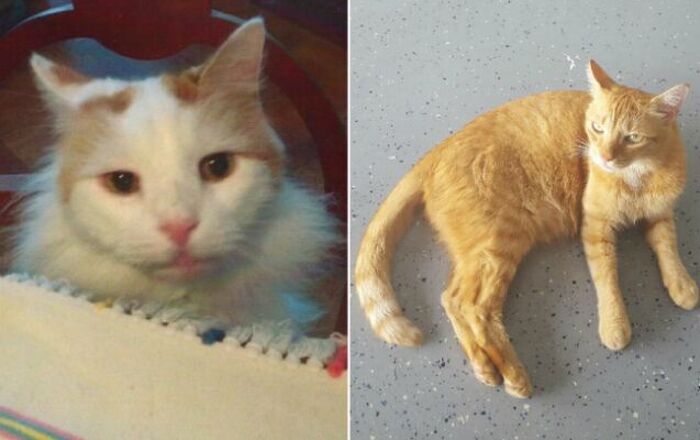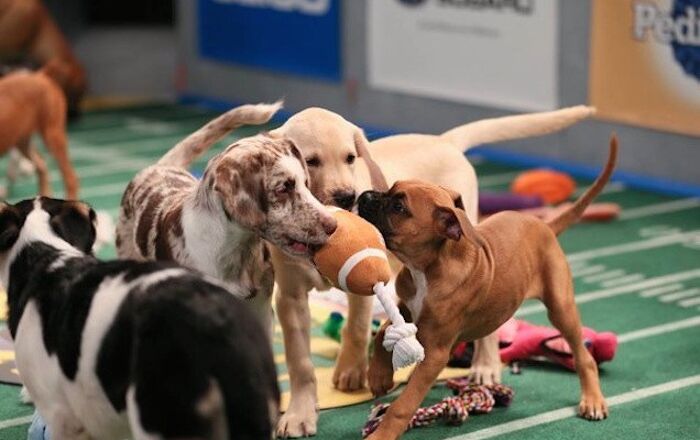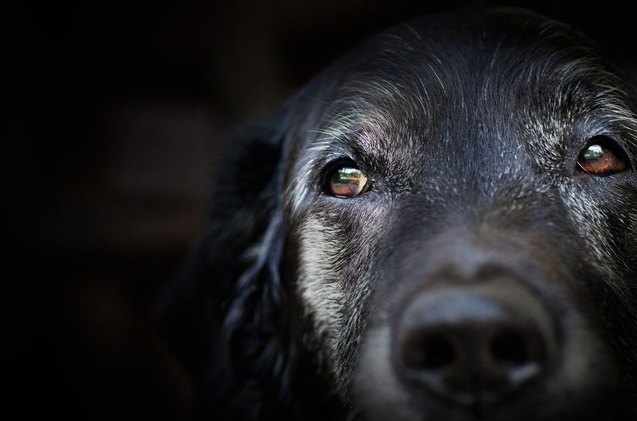
Also known as Canine Cognitive Dysfunction, dogs can get dementia. A gradual process, here are the signs to watch out for in your senior dog.
The short answer to “can dogs can get dementia?” is yes, they can, and it’s referred to as Canine Cognitive Dysfunction (CCD). Similar to the human form of this debilitating disease, the cause is an accumulation of abnormal proteins in the brain and the subsequent build-up of plaque which damages brain cells and affects memory, cognitive abilities and motor functions. And similar to the human variation, there is no known cure or absolute means to prevent it from occurring.
When my mom suffered from dementia, I often referred to it as death by a thousand cuts. It’s a gradual process and you lose your loved one bit by bit as they become uncharacteristically irritable, forget dates, past memories and eventually you. For pet owners, you may not even realize it’s occurring. It can be a slight change in behaviour – he no longer greets you at the door, doesn’t get excited about walks or respond to the sight of his favorite toy or treat. In fact, a research study by the Behavior Clinic at the University of California suggests that 28% of dogs aged 11-12 years and a whopping 68% of dogs aged 15-16 years showed at least one sign of cognitive dysfunction.
The good news is that with early detection, there are ways to slow the progression.
Related:Why Senior Dog Wellness Check-Ups are Important
First, let’s begin with the actual diagnosis.
If your pet is exhibiting unusual behaviors that are totally out of character, start with a visit to your vet to help narrow down the possible causes. Older animals often suffer from arthritis, kidney problems and diabetes and a simple blood test can help identify whether any of these ailments are driving your pet’s change in behavior. And let’s not forget that hearing and vision loss is as typical in aging pets as it is in aging humans. Losing his ability to connect with you can be highly stressful for an animal, and appropriate tests need to be included during his check up in order to make a proper diagnosis of his condition.
To help you spot potential signs of CCD, consider applying this well-known acronym in the pet-care industry – DISHA. It stands for Disorientation, Interactions, Sleep-Wake Cycle, House Soiling and Activity Levels and it will help you zero in on the behaviors you want to be looking for.
Does your dog become confused when engaged in what were once his normal day-to-day activities? For example, does he forget your regular walking route, wander around the house with the appearance of being lost or seem to forget where his bed is and how to use it. He may seem hesitant or reluctant to move throughout your home, preferring to sit in what he considers a safe place. This feeling of being disoriented can also be compounded by what is called a disconnect in spatial awareness. This disconnect results in him being perplexed as to how to complete logical, routine tasks such as getting in and out of the car, climbing the stairs or backing out from behind a sofa, chair or table.
While some dogs may become aggressive or cranky with the onset of CCD, others may appear withdrawn and even frightened. Either way, it’s a change in their normal behavior that you’re looking for. If your typically amiable pooch is disoriented and can’t figure out how to climb the back stairs or find his favorite toy, its understandable that he’s going to become anxious and agitated. Conversely, if your once outgoing dog is no longer reacting to the offer of treats, the arrival of guests or the mention of a “walk”, you may find he is retreating out of fear and anxiety. Again, a complete physical by your veterinarian should be completed in order to rule out any ailments that might be causing him pain and the resultant irritability/anxiety.
Related:How Important is Routine in Your Dog’s Life?
This next signal that your dog may be suffering from CCD relates to his sleep cycles. While we all tend to follow the 24-hour circadian rhythm – sleep when it’s dark and wake when it’s light – a pet that is dealing with cognitive dysfunction will experience a disruption in this pattern and may find himself wide awake all night and walking around. In fact, some dogs completely reverse the circadian cycle and regularly sleep during the day and pace at night. Now circadian rhythms are like an internal clock that influences the release of hormones in our system, our eating habits, digestion and even body temperature. So, its understandable how it can wreak havoc on a dog’s physical and emotional health when its out of whack.
If your pet is house-trained and typically diligent about doing his business out-of-doors – and letting you know when its time to go out – urinating or defecating can be a sign of cognitive deterioration. Be sure to have your vet check him out for the most obvious red flags: a bladder infection, kidney disease or bowel disease. Then re-examine his routine. Is he getting out on regular walks or has there been a disruption in his schedule? Finally, does he seem to have lost the ability to control his bladder or bowels. Is he doing the frantic dance by the door and then whoops; he has an accident? Or is he walking through the living room and seemingly oblivious to the fact that he’s urinating.
Dogs with cognitive deterioration may be prone to repetitive actions. Pacing, unsolicited barking, head bobbing and even tremors can be symptomatic of CCD. But while he may be exhibiting a restless pattern in his daily movements, they shouldn’t cause you to hesitate to maintain his regular exercise regimen. Nothing can replace the physical stimulation he can get from a good walk or active playtime and this type of interactive exercise is particularly important for dogs that are experiencing a drop in their cognitive abilities. While their sense of feeling disoriented can cause them to retreat from people and other animals, its important that you encourage him to stay active and social.
Related:Top 10 Surprising Super Foods for Super Pets
While it’s distressing to watch your best buddy slip away mentally, this is where you can step up and be that great pet parent that he’s always known you were.
Just like for humans, the foods that are rich in anti-oxidants and omega-3 fatty acids can help strengthen your dog’s brain cell health. There are a number of brands on the market that include these superfoods, however you should speak to your vet about which are the best formulation for your pooch’s situation.
Keep your best buddy mentally alert by engaging him in games that cause him to think and react to various stimuli. Puzzle dishes or mats where you can bury his favorite kibble or rubber Kongs that hide a treat and cause him to work extra hard to get it out.
Help your dog stay upbeat and active by letting him run and socialize at a leash-free dog park. Meeting up and interacting with other dogs is an ideal pick-me-up for a pooch who is mentally retreating. However, to prevent anxiety, keep excursions brief and fun.
Nothing throws a healthy pooch off more than a sudden change in routine and when that dog is dealing with cognitive issues, it simply adds to his sense of confusion. If you don’t have a regular schedule already, establish one so that you walk and feed him at set times.
You know your dog better than anyone. If you sense him becoming anxious because he can’t find his food dish or he got lost looking for the stairs, learn what soothes him. Is it a distraction such as a special treat? A calming walk? A cuddle? Soothing music?
Older dogs with CCD may also experience hearing and vision loss so keep his living space as consistent as possible. Food and water dishes in the same place so he won’t panic when hungry. Maintain furniture placement if he’s navigating with minimal vision. And ensure all his safe stuff – bed, blanket, toys – are within sniffing distance.
At present, the only drug on the market that is FDA-approved for the treatment of CCD in dogs is Anipryl – also known as selegiline hydrochloride or L-deprenyl. This drug helps to increase the dopamine levels in a dog’s brain to help improve memory loss and cognitive ability. But it’s not a wonder drug. It does have challenging side effects and still only varying degrees of success.

